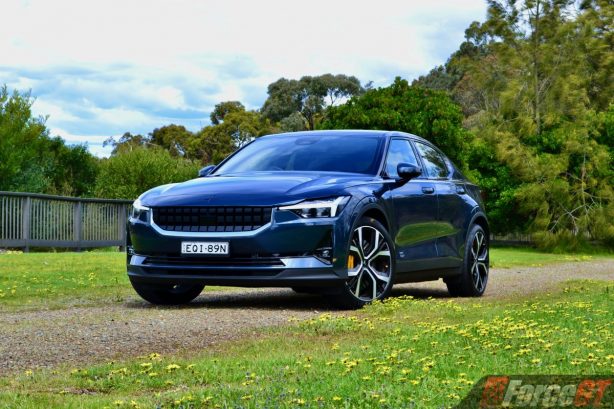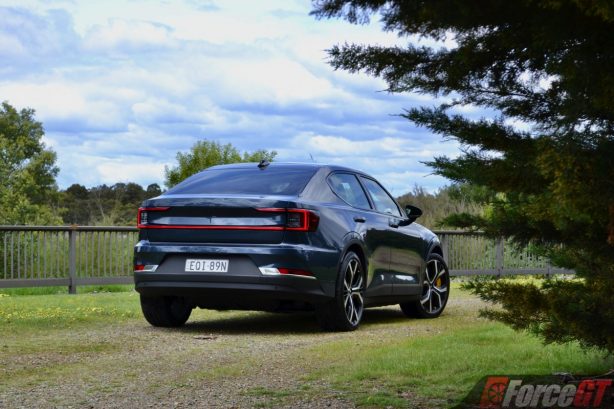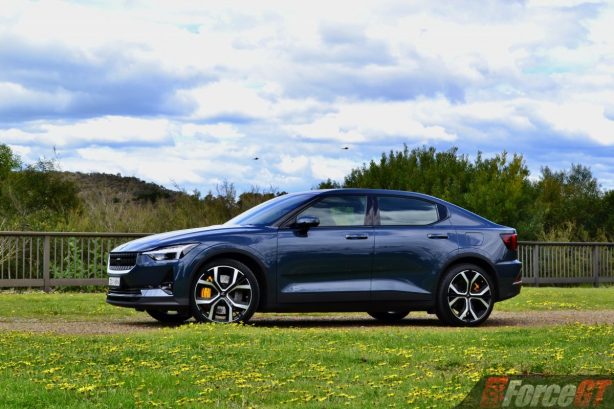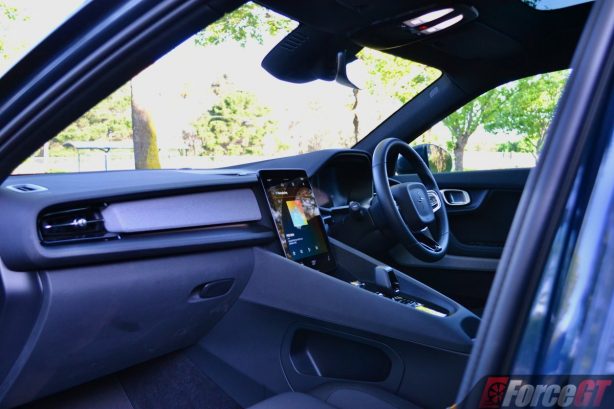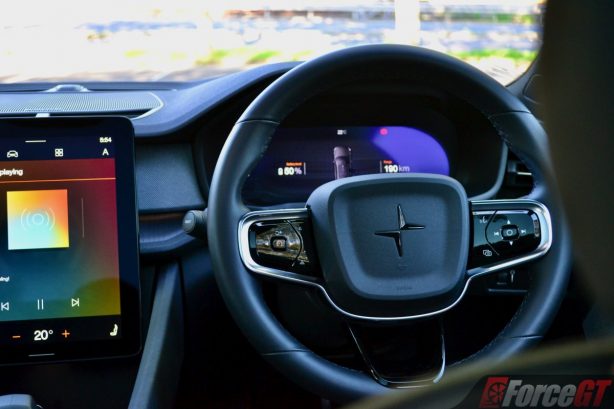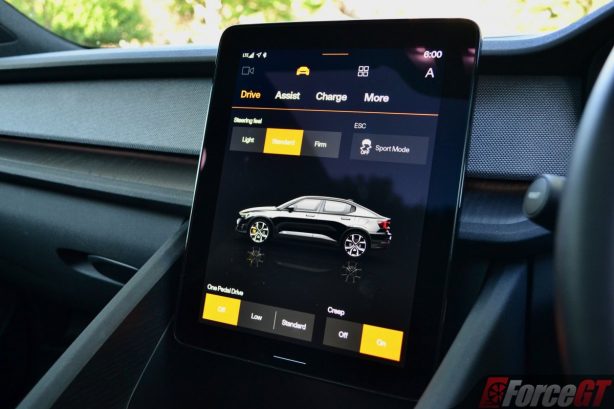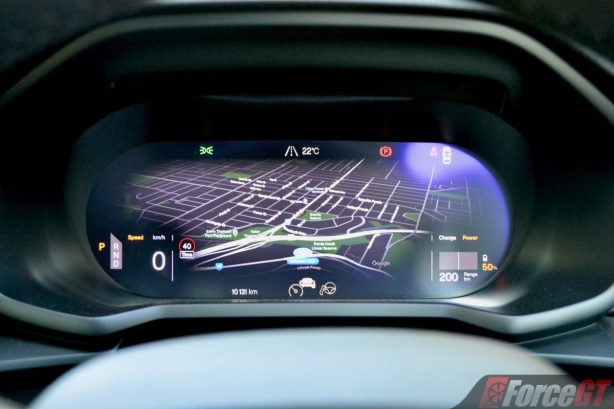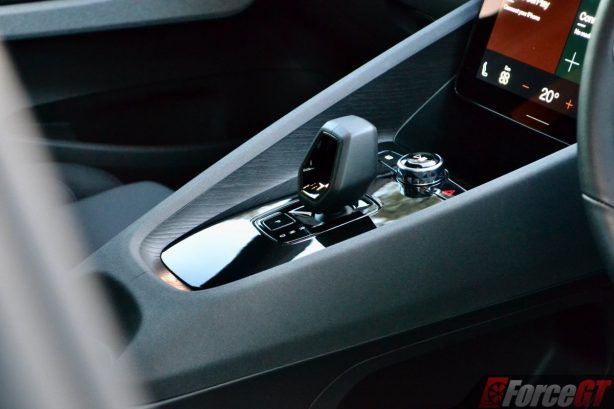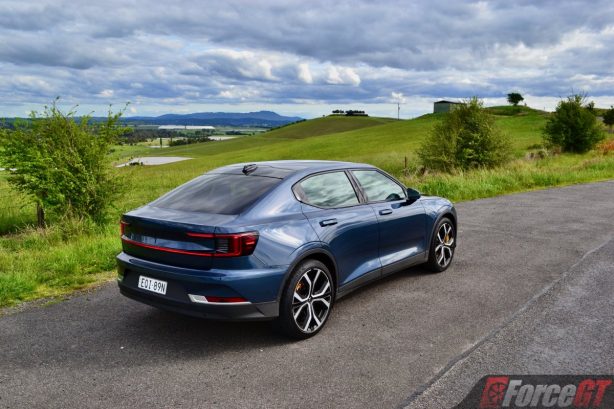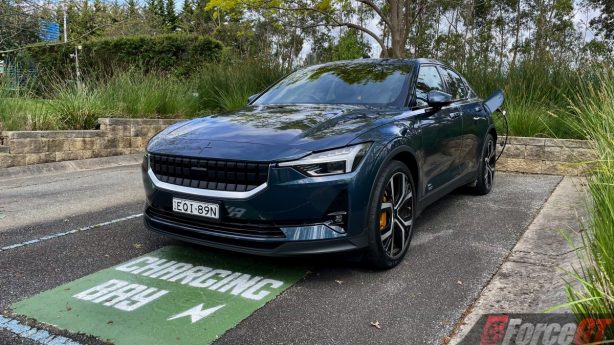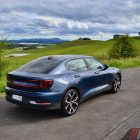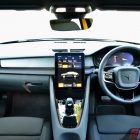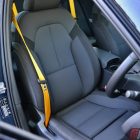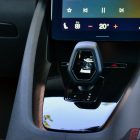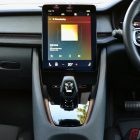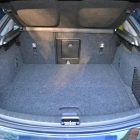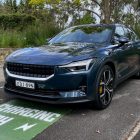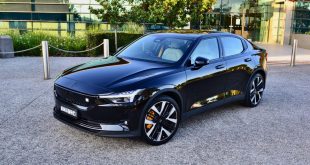What is Polestar? It was once Volvo’s performance arm. It’s badge was used on some of Volvo’s high-end sports models, much like M to BMW and RS to Audi. Forget all those because in 2018 Polestar transitioned into a standalone brand focusing purely on electric cars. The brand continues to be owned by Volvo and its Chinese parent company Geely. Its cars are built in China for global markets.
The brand broke into the EV scene with the Polestar 1, a luxurious two-door grand tourer plug-in hybrid with 440kW produced in small volume and aimed at those with deep pockets. The beautiful, quintessentially Swedish and Volvo-esque design together with storming performance was enough to make a bold introduction for the brand.
And so in 2020 out came the second Polestar model – the Polestar 2. This fully electric compact executive saloon would go on to increase Polestar’s brand awareness and take the fight to the segment’s dominant Tesla Model 3.
Today, the Polestar 2 line-up is made up of three variants, with price ranging from $63,900 to $73,400 before on-road costs and options. The entry-level Standard range Single motor makes 170kW and has a range of 478km. The Long range Single motor is also rated at 170kW but goes further with its 551km range. At the top of the line-up is the Long range Dual motor with 300kW, 487km of range, and 4.7 seconds to 100km/h. And it’s what we have on test here.
Fully loaded with $17,400 worth of options including the $3,400 Pilot lite pack, $6,000 Plus pack and $8,000 Performance pack, our test car has a final sticker of $90,800 plus ORCs. Queuing the competition at around that price point sees the Tesla Model 3 Long Range AWD ($76,900), Kia EV6 GT-Line AWD ($87,590) and BMW i4 ($99,900) stepping into the picture.
Polestar’s design language is simple. It literally means that as minimalist styling is employed everywhere including the interior. The clean, contemporary profile sets the base for a futuristic yet discrete design tone on which distinctive details like the architectural grille, frameless door mirrors and slim front and rear LED light blades define the looks.
Filling up the large wheel arches are standard 19-inch wheels, while 20-inch Y spoke black polished forged alloy wheels like those seen on our tester are optional for the LRDM model, as part of the Performance pack. Opting for this pack will also see the brake callipers painted in Swedish gold – a Polestar trademark accent – and they look sensational.
Riding higher than the Tesla Model 3, the Polestar 2 is a tall sedan, in part due to a large passenger cell. This results in a roomy cabin with space for five adults to stretch out. There’s plenty of headroom thanks to the car’s high and straight roof line. Legroom at the back is also generous, though the middle passenger will have to put up with a large centre hump – a surprise find given the lack of a driveline.
Scandinavian commonsense is everywhere, like the plethora of large storage pockets, compartments and cup holders around the cabin. The designers hadn’t gone overly obsessed with the notion of being unconventional, like what we are seeing in many other EVs. There’s still an instrumentation cluster ahead of the driver – a fully digital one, there’s still a centre touchscreen – 11.2 inches large, and the air-con vents are not hidden within some absurd location or in the roof liner.
Rather, the highlight of the interior is the overall design itself. There’s an expensive, futuristic and contemporary vibe that is calm and inviting. Polestar calls its design approach ‘quietly confident’ and it is literally.
There are subtle hints of Volvo, such as the steering wheel, gear lever and air vents, which blend in really well with bespoke Polestar details like the gold seat belts (part of the Performance pack), frameless rear view mirror and the super cool projected Polestar logo on the panoramic glass roof (part of the Plus pack).
Being an environmentally conscious vehicle means the interior is all vegan. There’s no leather or wood, at least not in our test car (Nappa leather is optional if you must). That said, the light fabric and ash deco aren’t the run-of-the-mill stuff, they feel very premium and fuse wonderfully with the rest of the cabin.
If anyone has doubt on its build quality given it’s not made in Sweden, afraid not because the craftsmanship is exemplary. Everything feels solidly put together. It’s flawless at the highest standard.
The tech is easy to use. The centre touchscreen is very responsive, the on-screen buttons are large and the layout is intuitive. It’s certainly one of the best touchscreens we have used.
The system uses Google Android Automotive OS and it works like a charm. You can say ‘Hey Google’ to activate voice assistant, you can sign into your Google account to bring up reminders and personal settings, and Google Maps is built in. You can also ask Google assistant to control some of the car’s functions like climate settings, media, navigation and phone. It’s a pretty slick system though some functions require the use of your mobile data and reception.
The digital instrumentation allows some degree of customisation but is fairly limited. At least, it has a map view which is useful when you are navigating.
Other tech included as part of the Pilot pack are adaptive cruise control, surround view camera, adaptive headlamps and high-speed autonomous emergency braking. Opt for the Plus pack and you will score a wireless phone charger and 13-speaker Harman Kardon surround sound system, in addition to comfort features like heated steering wheel and second-row seats, plus the panoramic glass roof.
The car has a 405-litre main rear boot, expandable to 1,095 litres with the rear seats folded. A second 35-litre boot is found under the bonnet where an engine in a non-EV normally sits.
The 300kW/660Nm dual motor all-wheel drive set up in our Polestar 2 LRDM packs some serious punch. Being full electric, the torque is instantaneous, which means accelerating away from stand still or overtaking is all done effortlessly. Grip is phenomenal, which means it’s always safe and controlled in all conditions.
Weighing around 2.1 tonnes, the car is heavy but clever packaging means most of the weight is stuffed low in the car resulting in a low centre of gravity. There isn’t much roll in corners and the steering is precise for the most part if not lacking a little in feedback.
The ride is smooth but maintains an appropriate layer of firmness for a solid driving feel. It’s a very easy, relaxing and refined car to drive overall, which is Polestar’s design intent.
We find the LRDM’s rated range of 487km a bit optimistic. Driven normally (without an overly enthusiastic right foot), a single charge will more realistically give around 450km of range.
In terms of charging, both AC and DC fast charging work with the Polestar 2. Starting with the most basic, charging at home with a domestic power outlet will take 6 to 8 hours for a full charge. You’ll most likely do this overnight with the car parked in the garage.
For quicker charging, you’ll need charge at one of the many public charge points available in places like shopping malls, city council buildings, recreational centres and hotels. Most of these places offer free charging for several hours (usually unlimited free charging at city council premises). The charge type varies between places, though they are usually 11kW AC, 22kW AC or 50kW DC fast charging. The latter is able to top up the battery from near empty to 80 percent in about 40 minutes. For paid public charging, the fee is around $0.40 per kWh.
With a combination of at-home charging, free public charging and paid charging, you’ll be able to run the Polestar 2 at a lower cost than most petrol or diesel powered vehicle. If you have solar panels at home you’ll save even more on charging cost.
The Polestar 2 is covered by a five-year, unlimited kilometre warranty. More impressive, it’s also offered with five-year free servicing and roadside assistance.
Verdict
Design & Comfort
Performance & Handling
Quality
Economy
Equipment & Features
OUR SCORE
4.2/5
+ Plus
- Clean, contemporary design
- Excellent interior
- Quietness and refinement
- Good ride and handling balance
– Minus
- Expensive options
- Heavy
- Real world range falls short of claimed
Overall
The Polestar 2 very much fits in the brief for a sensible electric car. It’s practical, well made and easy to operate and drive. It may not be the flashiest EV around, but that clean cut, Scandinavian styling is undeniably handsome and appropriately understated.
There’s still a premium price tag to pay for one of these, though as long as you don’t go too crazy with the options lists it isn’t too bad.
Oh, and Tesla should be paying attention.
2023 Polestar 2 Long Range Dual Motor AWD Pricing and Specification
| Price (excl. on-road cost): | From: $73,400 As tested: $90,800 Options included: Pilot lite pack $3,400 Plus pack $6,000 Performance pack $8,000 |
| Warranty | 5 years / unlimited km |
| Warranty Customer Assistance | 5 years roadside assist |
| Country of Origin | Sweden; manufactured in China |
| Powertrain | Electric motors (dual) total output: 300kW/660Nm |
| Drivetrain | All-wheel drive |
| Power to Weight Ratio (W/kg) | 141.7 |
| 0-100km/h (seconds): | Claimed: 4.7; Tested: 4.9 |
| Efficiency: | Claimed: 19.4kWh/100km; Tested: 19.7kWh/100km WLTP Range: 487km; Tested: 450km |
| Body | 5-door liftback, 5-seats |
| Safety | 5-star ANCAP, 6 airbags, ABS, EBD, BA, VSC, Automatic Emergency Braking (AEB), blind spot monitoring system, lane keeping assist, speed limit sign recognition, reversing camera with 360-degree view |
| Dimensions (L/W/H/W-B) mm | 4,606/1,891/1,477/2,735 |
| Kerb Weight (kg) | 2,113 |
| Entertainment | 11.2-inch touchstreen infotainment system, satellite navigation, Bluetooth, USB, AM/FM/DAB, 8-speaker stereo |
Competitors:
Hyundai Ioniq 5, Kia EV6, Tesla Model 3, Nissan Leaf
 ForceGT.com Car News, Car Reviews, Video Reviews, Tuning and much more.
ForceGT.com Car News, Car Reviews, Video Reviews, Tuning and much more. 